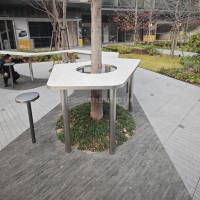Welcome to the website for landscape facilities products and knowledge.
How does the trash can’s design minimize the risk of tipping during use?
A well-designed trash can minimizes the risk of tipping through several key features. First, many models incorporate a weighted base, often with sand or metal inserts, to lower the center of gravity. Wider-bottom designs also distribute weight more evenly, reducing the chance of toppling when bumped. Non-slip rubber feet or textured bottoms provide additional grip on smooth floors.
Some advanced designs use a pyramid or trapezoid shape that naturally resists lateral forces. For outdoor use, trash cans may feature anchor points for securing to walls or posts. High-quality materials like thick plastic or stainless steel add structural rigidity while maintaining balance.
The opening size and lid mechanism also play roles - a properly sized mouth prevents overfilling, while weighted or slow-close lids avoid sudden shifts in balance. Ergonomic handles and pedal designs allow users to open the bin without applying sideways pressure that could cause tipping.
Commercial-grade trash cans often combine these features, using heavy-duty construction with reinforced bases. Some models even incorporate internal baffles or compartments to distribute waste weight more evenly. By considering physics principles and real-world usage patterns, modern trash can designs achieve remarkable stability in diverse environments.
Related search:

Recommendation
An outdoor bar counter with stainless steel and terrazzo materials in an irregular shape